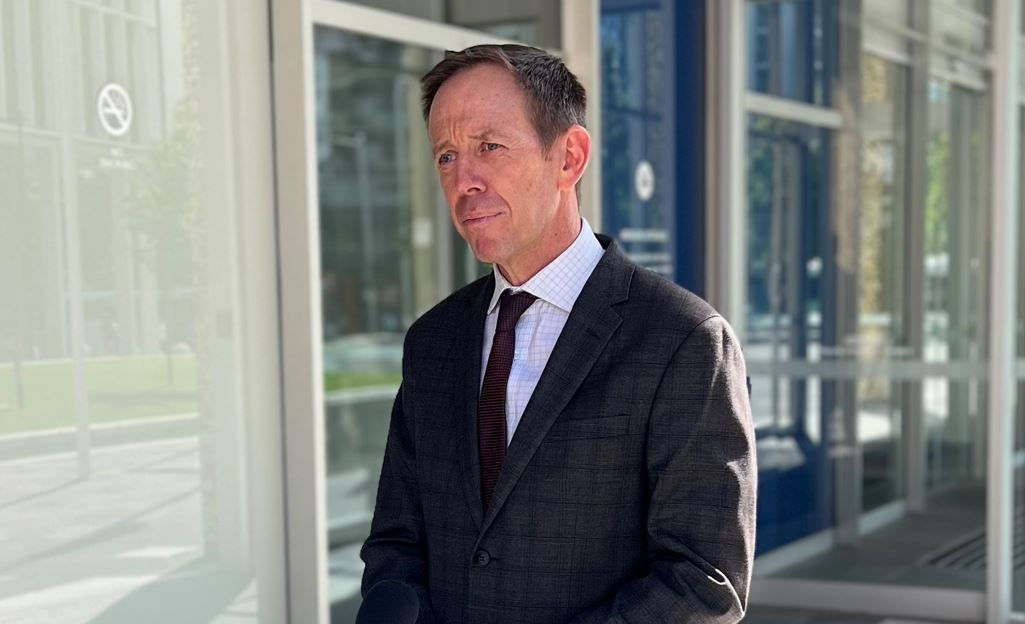The ACT’s greenhouse gas emissions have fallen to 47 per cent below 1990 levels, but are 13 per cent higher than last year, according to ACT Government reports published today: the 2022-23 Minister’s Annual Report under the Climate Change and Greenhouse Gas Reduction Act 2010 and the ACT Greenhouse Gas Inventory for 2022–23.
Between 1989–90 and 2022–23, the ACT’s greenhouse emissions have fallen 47 per cent, from 3,041 kilotonnes to 1,622 kilotonnes. Although the population has grown by 67 per cent, per capita emissions have fallen 68 per cent, to 3.5 tonnes per person – just 19 per cent of the national average of 18.3 tonnes per person, and lower than any other jurisdiction except Tasmania.
The ACT Government attributes this to four years of 100 per cent renewable electricity generation, supplied by 12 large feed-in tariff supported projects.
“That’s great progress, and puts us at the forefront of jurisdictions internationally in tackling our greenhouse gas emissions,” Shane Rattenbury, ACT Minister for Water, Energy and Emissions Reduction, said.
However, greenhouse gas emissions increased by 13.03 per cent since the last financial year. In 2022–23, the ACT emitted 1,622 kilotonnes of carbon dioxide in 2022–23, compared to 1,435 kilotonnes in 2021–22. The biggest sources of emissions were transport including aviation (64.5 per cent), and stationary energy (22.5 per cent) consisting of fossil fuel gas combustion (19.9 per cent), fugitive gas emissions / leakage (1.8 per cent), and other stationary fuels (0.7 per cent). Together, transport and gas make up 87 per cent of the ACT’s emissions.
“That was in many ways expected,” Mr Rattenbury said. “The last couple of years have seen probably an uncharacteristic suppression of emissions from other sectors, with people being locked at home during lockdowns with COVID impact and the like. We’re seeing with the bounce back people getting back out, driving around more, taking flights. These are areas where we’ll need to focus in the future.”
As the city’s population grows, transport emissions are a problem, Mr Rattenbury believes: the increased number of cars drives up transport emissions.
“We need to electrify our transport fleet; we need to improve public transport; we need to make walking and cycling easier,” Mr Rattenbury said. “We’ve got to give people good alternatives to cut down those transport emissions.”
The ACT Government has set a target that by 2030, 80 to 90 per cent of vehicles sold in the ACT will be zero emissions vehicles (ZEVs), while internal combustion engine vehicles will be phased out by 2035. Due to government incentives, the ACT has the highest uptake of ZEVs in Australia per capita, which Mr Rattenbury predicts will eventually be sold second-hand.
Likewise, 94 electric buses will enter the ACT fleet by 2026, adding to the 12 already in action.
“The people who ride those electric buses really enjoy them,” Mr Rattenbury said. “They’re quiet; they’re comfortable; they’re much smoother. There’s certainly patron enthusiasm for them, and the government’s determined to get the rollout done. We’ve also just got to get the right charging infrastructure into the bus depots to make sure we can keep those vehicles on the road. And that project is well underway.”
Aviation made up 3 per cent of the ACT’s greenhouse gas emissions, producing 54 kilotonnes of carbon dioxide. Biofuels could be an alternative to traditional jet fuel, Mr Rattenbury believes. (In passing, a Virgin jetliner this week made the first transatlantic flight, from London to New York, powered by tallow and other waste fats – which has been seen as “a huge step towards jet zero”, the ABC reported.)
Short aviation trips are the easiest to tackle, especially if the rail system is upgraded, Mr Rattenbury thinks.
“Getting a decent rail line to Sydney would encourage a lot more people to travel that way. Picking up the rail travel time down to maybe just two-and-a-half or three hours, it becomes very time competitive with a flight once you get to the airport, go through security, and get delayed by fog.”
As for fossil fuels, the ACT Government intends to electrify Canberra and phase out fossil-fuel gas by 2045. Today, Mr Rattenbury announced a regulation to prevent new gas network connections.
Waste produced 25 per cent more greenhouse gas emissions than last year (175 kilotonnes).
“This is a relatively small part of the ACT’s emissions, one where we can make good progress in the next couple of years, particularly if we get food and organics waste treated differently to its current trajectory of going to landfill,” Mr Rattenbury said.
Food Organics and Garden Organics (FOGO) will be rolled out across the ACT once the FOGO facility is set up in 2026; it is expected to cut emissions by 30 per cent. Food businesses are now required to have separate collections for organic waste and to develop a food waste reduction plan; and food rescue organisations such as OzHarvest are promoted as alternatives to throwing out food waste.
Further emissions were generated from waste processing and decomposition including wastewater (9.9 per cent); industrial processes and product use emissions (2.1 per cent); and agriculture (1 per cent). Total emissions were partly offset by land use, land-use change, and forestry, which removes 192 kilotonnes of carbon dioxide – absorbing more emissions than it generated.



